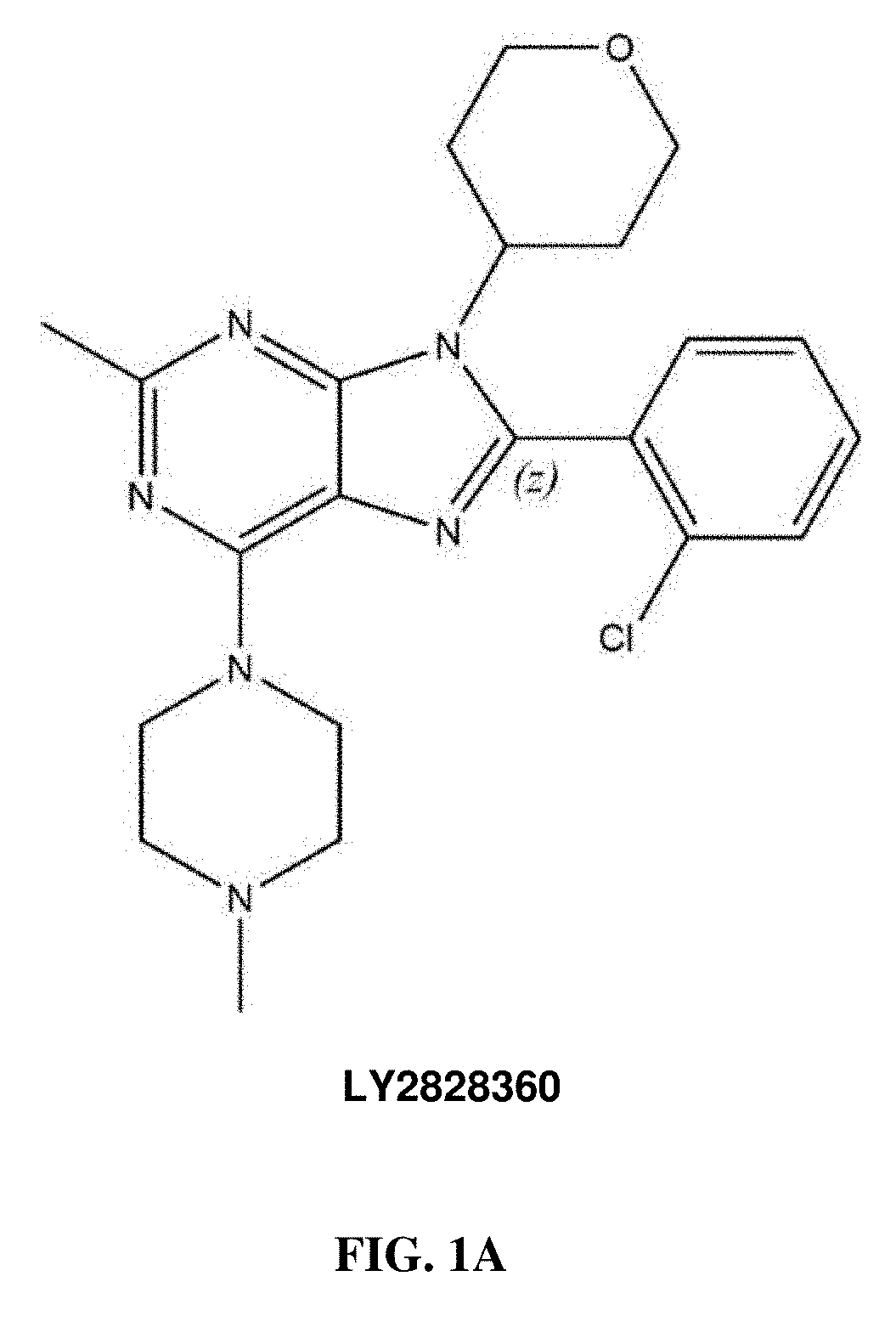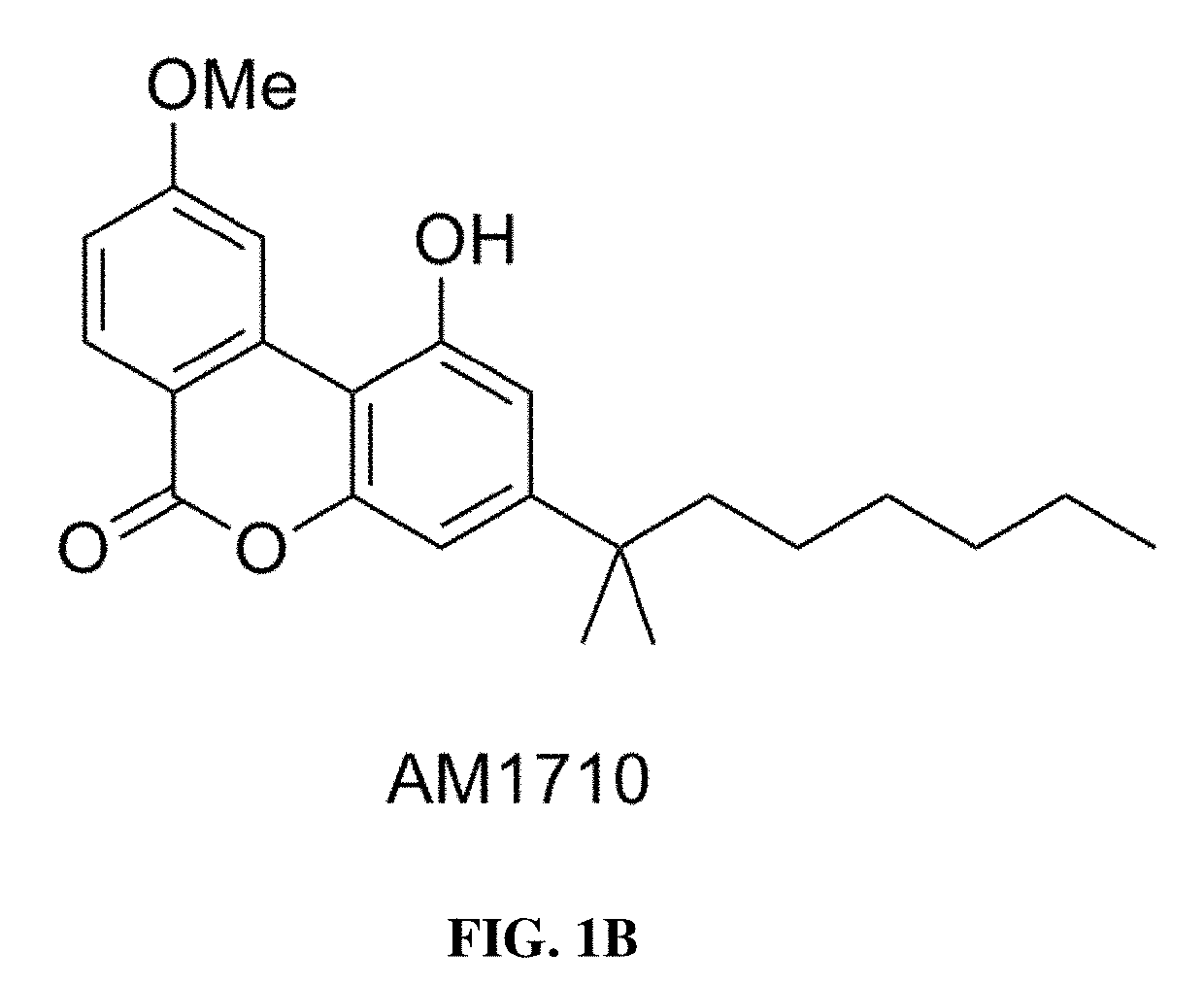Methods of using cannabinoid cb2 receptor agonist compositions to suppress and prevent opioid tolerance and withdrawal in a subject
a cannabinoid cb2 receptor and composition technology, applied in the field of cannabinoid cb2 receptor agonist compositions, can solve the problems of side undesirable pharmacologic effects limiting clinical use, and the effect of reducing or preventing opioid withdrawal in other pain models, such as neuropathic pain models, is currently unknown, and achieves the effect of reducing or preventing opioid withdrawal, and improving one or more clinical manifestation
- Summary
- Abstract
- Description
- Claims
- Application Information
AI Technical Summary
Benefits of technology
Problems solved by technology
Method used
Image
Examples
example 2
f Acute Administration of LY2828360 in Paclitaxel-Treated WT Mice
[0233]Paclitaxel decreased paw-withdrawal thresholds (F)1,10=249.98, P=0.0001) and increased acetone-evoked behaviors (F)1,10=342.95, P=0.0001), consistent with our previous studies showing development of mechanical and cold allodynia after paclitaxel treatment in mice. Thus, mechanical (FIG. 4A) and cold (FIG. 4B) allodynia developed by day 4 (P=0.0001) after initial paclitaxel dosing and was maintained with high stability in paclitaxel-treated WT mice relative to cremophor-vehicle treatment from day 7 onward (P=0.0001).
[0234]In WT mice, acute systemic administration of LY2828360 suppressed paclitaxel-induced mechanical (F1,10=125.902, P=0.0001; FIG. 4C) and cold (F1,10=29.167, P=0.0001; FIG. 4D) allodynia in a dose-dependent manner. The high dose of LY2828360 (3 mg / kg i.p.) fully reversed paclitaxel-induced allodynia and normalized responses to pre-paclitaxel baseline levels (P=0.167 mechanical; P=0.53 cold) (FIGS. 4...
example 3
y Chronic Administration of LY2828360 Blocked the Development of Tolerance to the Anti-Allodynic Effects of Morphine in WT but not in CB2KO Mice
[0238]To study the effects of LY2828360 treatment on the development of tolerance to morphine, pharmacologic manipulations were used in two phases of treatment during the maintenance of neuropathic pain (FIG. 10A). In Wildtype (WT) mice, phase 1 treatment with LY2828360 (3 mg / kg per day i.p.×12 days) suppressed paclitaxel-induced mechanical (F2,15=183.929, P=0.0001; FIG. 10B) and cold (F2,15=64.218, P=0.0001; FIG. 10C) hypersensitivities relative to phase 1 vehicle treatments.
[0239]LY2828360 markedly suppressed paclitaxel-induced mechanical and cold allodynia throughout the observation interval (P=0.0001 mechanical; P=0.016 cold; FIGS. 5B and 5C). Mechanical and cold hypersensitivities were largely normalized by LY2828360 (3 mg / kg i.p.×12 days) with responses returning to baseline (i.e., pre-paclitaxel) levels (P=0.138 mechanical; P=0.182 co...
example 7
f Chronic AM1710 Treatment Suppresses Paclitaxel-Induced Allodynia and Delays the Development of Tolerance to the Antiallodynic Effects of Morphine
[0261]Paclitaxel (4 mg / kg, i.p.), administered on four alternate days, induced neuropathic pain in mice, as indicated by the reduction in the mechanical withdrawal threshold (F1,21=544.316, P1,21=204.137, P2,21=0.644, P=0.535 (mechanical); F2,21=0.284, P=0.755 (cold)] in mechanical or cold responsiveness before pharmacologic manipulations. An interaction between paclitaxel treatment and groups was detected for mechanical paw withdrawal threshold (F2,21=4.463, P=0.024), although Bonferroni post hoc tests failed to detect any significant pairwise comparisons, suggesting that mechanical paw withdrawal thresholds did not differ between groups before phase I dosing. The interaction between chemotherapy treatment and groups for cold sensitivity was not significant (F2,21=1.489, P=0.248). Thus, groups were similar before initiation of drug treat...
PUM
| Property | Measurement | Unit |
|---|---|---|
| humidity | aaaaa | aaaaa |
| pH | aaaaa | aaaaa |
| chemical structure | aaaaa | aaaaa |
Abstract
Description
Claims
Application Information
 Login to View More
Login to View More - R&D
- Intellectual Property
- Life Sciences
- Materials
- Tech Scout
- Unparalleled Data Quality
- Higher Quality Content
- 60% Fewer Hallucinations
Browse by: Latest US Patents, China's latest patents, Technical Efficacy Thesaurus, Application Domain, Technology Topic, Popular Technical Reports.
© 2025 PatSnap. All rights reserved.Legal|Privacy policy|Modern Slavery Act Transparency Statement|Sitemap|About US| Contact US: help@patsnap.com



